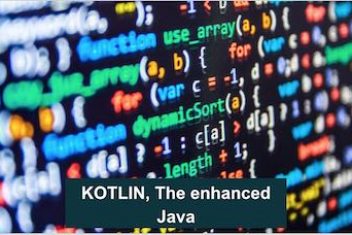Integrating talent acquisition metrics into recruitment is crucial in today’s competitive job market. These metrics help organizations identify inefficiencies and improve their recruitment processes.
Recruitment KPIs, including time-to-fill, quality of hire, and candidate satisfaction, guide businesses towards hiring goals. They help make data-driven decisions and enhance hiring practices. KPIs also reflect a company’s commitment to optimizing every aspect of the talent acquisition process. Reliable data helps identify strengths and weaknesses, enabling timely interventions and a proactive approach. Effective KPIs also help forecast trends and anticipate future recruitment needs.
How to Identify Effective Recruitment KPIs
Businesses must identify their specific objectives to select key performance indicators (KPIs). Mismatches between these goals and recruitment metrics can lead to ineffective hiring processes. Analyzing current hiring strategies and outcomes can help determine the best KPIs. Industry benchmarks can help gauge performance and make adjustments. Identifying effective KPIs requires analyzing historical data and industry best practices. KPIs should be adaptive to unique challenges and goals and regularly reviewed and updated to ensure they remain relevant and aligned with corporate objectives.
Read: How Social Media Can Transform Your Hiring Strategy
The Role of Talent Acquisition Metrics
Talent acquisition metrics, ranging from candidate sourcing to onboarding, are crucial for assessing recruitment effectiveness. They provide a comprehensive view of recruitment performance and identify areas for improvement. Advanced analytics have improved accuracy, allowing better insights into candidate engagement and churn rates. Feedback mechanisms during onboarding can also improve hire assessments. Continuous learning from these metrics can sharpen a company’s competitive edge in recruiting top talent.
Practical Steps to Utilize Recruitment Data Effectively
- Conduct a thorough diagnosis of existing recruitment processes to identify strengths and weaknesses. A deep dive will expose inefficiencies and potential biases hindering efforts.
- Clearly define objectives aligned with desired business outcomes. Ensure everyone involved understands these objectives to maintain alignment.
- Implement robust data tracking systems to ensure accurate and real-time data collection. Deploy technology that integrates seamlessly with existing HR systems for optimal functionality.
- Review and analyze KPI data regularly, adjusting recruitment strategies to optimize performance. Set aside time for monthly or quarterly evaluations, during which key stakeholders can revisit strategies and refine approaches.
These actions are essential for turning unprocessed data into insights that can be used to improve hiring procedures and achieve long-term success. In addition to enhancing particular procedures, companies that adopt a continuous improvement culture eventually create an atmosphere that promotes creativity and excellence.
Challenges in Implementing Recruitment KPIs
Although recruiting key performance indicators might be advantageous, opposition, data privacy concerns, and technological difficulties can make implementation difficult. Organizations should adopt a robust change management strategy to overcome these obstacles, communicate openly, and invest in training and technological upgrades. Involving staff in discussions about KPI implementation and investing in training can help alleviate concerns. Integrating new systems with measurable benefits can turn initial skepticism into enthusiastic support.
The Future of Recruitment Metrics
As technology evolves, the landscape of recruitment metrics will transform. Predictive analytics and artificial intelligence can improve the precision and depth of KPI data. Monitoring industry developments is essential to remaining competitive. Companies that adapt to technological advancements early will likely lead the way in innovative recruitment strategies, setting them apart in a fiercely competitive hiring environment.
The potential impact of AI-driven insights allows for rapid adaptation to shifting market demands and gives businesses a strategic advantage. Predictive analytics can aid in foreseeing recruiting bottlenecks or surges, allowing for agile resource allocation. As these tools advance, they can shift the focus from hindsight to foresight, significantly impacting recruitment effectiveness.
Conclusion: Making Data-Driven Recruitment Decisions
In conclusion, effectively utilizing KPIs and talent acquisition metrics is vital for making informed, data-driven recruitment decisions. By leveraging these tools, organizations can unlock efficiencies within their hiring processes, leading to improved talent acquisition outcomes. The key is to monitor recruitment strategies closely and remain flexible, adapting to new insights and changing market conditions.
This resource offers valuable insights into the significance of KPIs in modern recruitment. Embracing a data-driven approach streamlines recruitment and aligns hiring practices with the business’s evolving needs, ensuring sustainable growth and success.
If you like the content, we would appreciate your support by buying us a coffee. Thank you so much for your visit and support.



